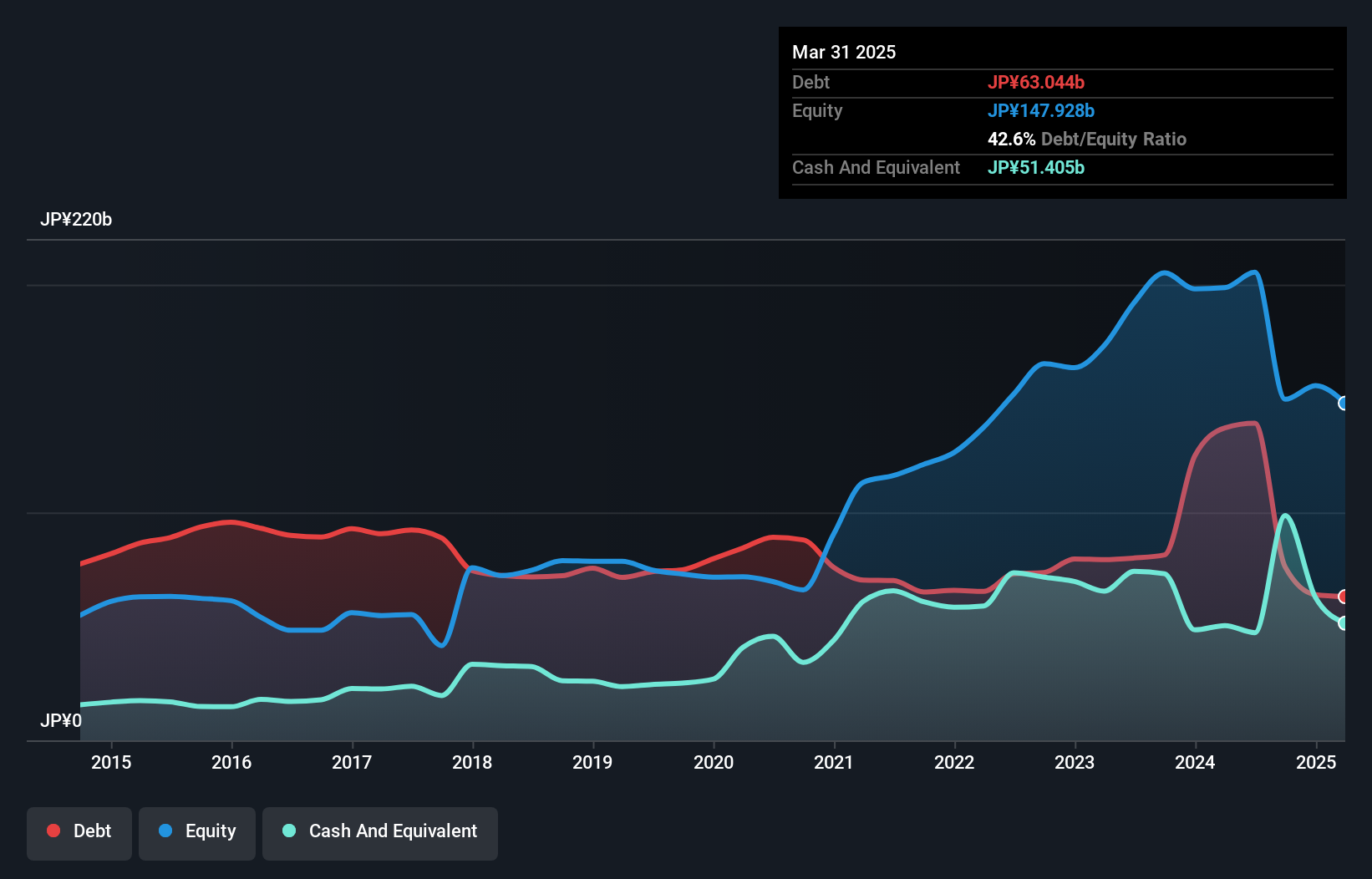
Howard Marks put it nicely when he said that, rather than worrying about share price volatility, 'The possibility of permanent loss is the risk I worry about... and every practical investor I know worries about.' So it seems the smart money knows that debt - which is usually involved in bankruptcies - is a very important factor, when you assess how risky a company is. We note that Sanken Electric Co., Ltd. (TSE:6707) does have debt on its balance sheet. But should shareholders be worried about its use of debt?
What Risk Does Debt Bring?
Debt assists a business until the business has trouble paying it off, either with new capital or with free cash flow. If things get really bad, the lenders can take control of the business. However, a more frequent (but still costly) occurrence is where a company must issue shares at bargain-basement prices, permanently diluting shareholders, just to shore up its balance sheet. Of course, plenty of companies use debt to fund growth, without any negative consequences. The first thing to do when considering how much debt a business uses is to look at its cash and debt together.
What Is Sanken Electric's Net Debt?
The image below, which you can click on for greater detail, shows that Sanken Electric had debt of JP¥63.0b at the end of March 2025, a reduction from JP¥137.1b over a year. However, it also had JP¥51.4b in cash, and so its net debt is JP¥11.6b.

A Look At Sanken Electric's Liabilities
The latest balance sheet data shows that Sanken Electric had liabilities of JP¥54.4b due within a year, and liabilities of JP¥56.8b falling due after that. Offsetting this, it had JP¥51.4b in cash and JP¥23.6b in receivables that were due within 12 months. So it has liabilities totalling JP¥36.1b more than its cash and near-term receivables, combined.
Of course, Sanken Electric has a market capitalization of JP¥185.2b, so these liabilities are probably manageable. However, we do think it is worth keeping an eye on its balance sheet strength, as it may change over time. There's no doubt that we learn most about debt from the balance sheet. But ultimately the future profitability of the business will decide if Sanken Electric can strengthen its balance sheet over time. So if you're focused on the future you can check out this free report showing analyst profit forecasts.
View our latest analysis for Sanken Electric
In the last year Sanken Electric had a loss before interest and tax, and actually shrunk its revenue by 48%, to JP¥122b. That makes us nervous, to say the least.
Caveat Emptor
While Sanken Electric's falling revenue is about as heartwarming as a wet blanket, arguably its earnings before interest and tax (EBIT) loss is even less appealing. To be specific the EBIT loss came in at JP¥3.8b. When we look at that and recall the liabilities on its balance sheet, relative to cash, it seems unwise to us for the company to have any debt. Quite frankly we think the balance sheet is far from match-fit, although it could be improved with time. However, it doesn't help that it burned through JP¥28b of cash over the last year. So in short it's a really risky stock. When analysing debt levels, the balance sheet is the obvious place to start. But ultimately, every company can contain risks that exist outside of the balance sheet. For instance, we've identified 3 warning signs for Sanken Electric (2 are a bit unpleasant) you should be aware of.
When all is said and done, sometimes its easier to focus on companies that don't even need debt. Readers can access a list of growth stocks with zero net debt 100% free, right now.
New: Manage All Your Stock Portfolios in One Place
We've created the ultimate portfolio companion for stock investors, and it's free.
• Connect an unlimited number of Portfolios and see your total in one currency
• Be alerted to new Warning Signs or Risks via email or mobile
• Track the Fair Value of your stocks
Have feedback on this article? Concerned about the content? Get in touch with us directly. Alternatively, email editorial-team (at) simplywallst.com.
This article by Simply Wall St is general in nature. We provide commentary based on historical data and analyst forecasts only using an unbiased methodology and our articles are not intended to be financial advice. It does not constitute a recommendation to buy or sell any stock, and does not take account of your objectives, or your financial situation. We aim to bring you long-term focused analysis driven by fundamental data. Note that our analysis may not factor in the latest price-sensitive company announcements or qualitative material. Simply Wall St has no position in any stocks mentioned.
About TSE:6707
Sanken Electric
Engages in the manufacture and sale of electric equipment and apparatus in Japan and internationally.
Good value with adequate balance sheet.
Similar Companies
Market Insights
Community Narratives





